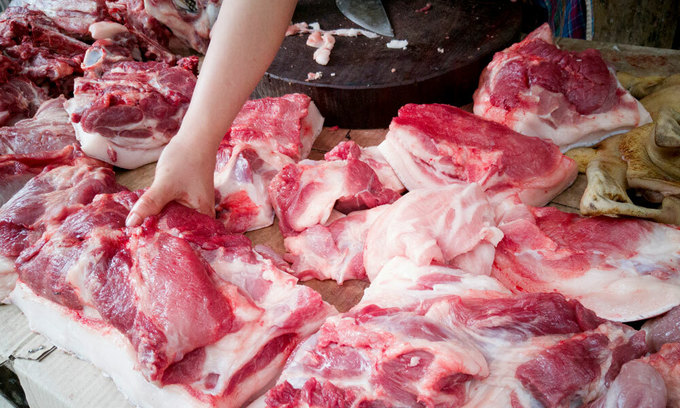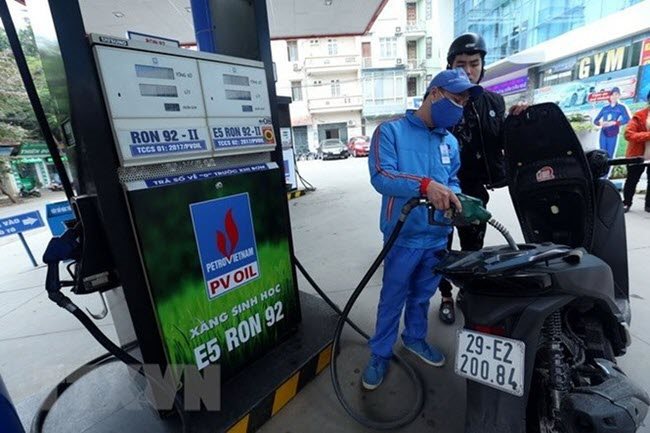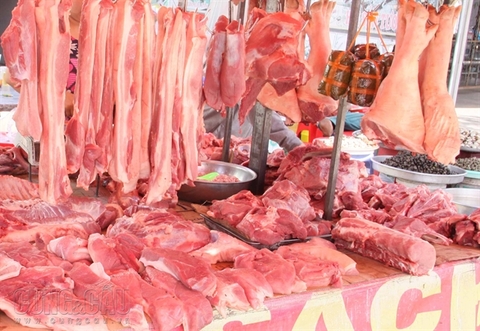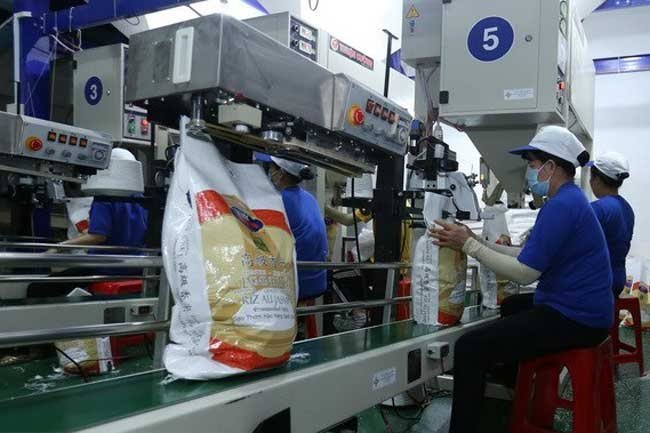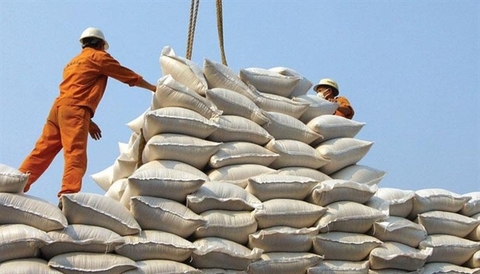Authentic touch to local spice market
Authentic touch to local spice market
Spice and seasoning brand Mr. Cook’s all-out offensive to enter the northern market, as well as its innovative technology foundations are shaping up to be a powerful challenge for foreign brands like Knorr, Maggi, and Ajinomoto. 
The launching ceremony of the Mr. Cook (Ong Bep) brand of condiments in Hanoi was sizzling with excitement from the more than 300 attendees, most of whom were housewives looking to try the “Made in Vietnam” nutrition products that have already conquered most southern provinces and are making serious headways in overseas markets like Japan and Europe.
To start its conquest of the northern provinces on a high note, each participant was presented with a gift bag of 10 Mr. Cook spice and seasoning products by Nguyen Huynh Dat personally.
As the creator of leading multinationals of the spice world like Knorr (Unilever) and Maggi (Nestlé) for the Vietnamese market for more than 20 years, Nguyen Huynh Dat, CEO of Vietnam-Japan Food Industries JSC – Mr. Cook’s brand owner, was confident that customers would straightaway see the difference between Mr. Cook’s naturally fermented soybean soy sauce and spice products and currently popular condiments, especially as these products were made specifically for Vietnamese cuisine and local palates from clean raw materials meeting VIETGAP and organic standards in the country.
“There are two ways to produce food, spice, and seasoning: food science technology and food nutrition – and Mr. Cook is the only brand that opted for the former,” Dat said and expressed his desire of developing a domestic spice and seasoning brand for the almost 97 million Vietnamese people who are currently using condiments by domestic leading player Masan Consumer, or foreign producers like the Netherland’s Unilever, Switzerland-based Nestlé, or Japan’s Ajinomoto.
Fierce competition
The market for spices and seasoning is dominated by foreign players. According to Kantar Worldpanel, a global data, insights, and consulting company, in the four cities of Ho Chi Minh City, Hanoi, Danang, and Can Tho as well as the rural regions, Masan Consumer has acquired the largest market share. The runner-up is Ajinomoto with a variety of soy products and fish sauces, as well as tomato and chilli sauce. In addition, Unilever and Nestlé are also widely popular, although their market shares are significantly smaller.
Besides, Nielsen, another consumer research services provider, forecasts the Vietnamese condiments market to reach an average annual growth of 25-32 per cent in 2016-2022. Vietnamese households pose a high demand for seasoning for their meals – and it does take a lot of seasoning to make 30 million litres of soup a day, all the while the amount of fried and stir-fried dishes increases by 18 million plates and 14 million braised dishes during the weekends.
The market potential is quite clear, which comes with fierce competition, forcing players to go all out – and like with many other segments, financial capacity is a key factor in deciding the winner.
A good example would be monosodium glutamate (MSG), which makes up 30 per cent of the raw materials used to manufacture seasoning. Ajinomoto – which is a leading MSG manufacturer – has a definite advantage in this segment, which allows it to market Aji-ngon products at a lower pricing point than Unilever’s Knorr.
Besides, Ajinomoto also owns bone and meat broth extraction technology and does not have to use processed chicken flour like Knorr, which brings its overall material expenses even lower below the competition while ensuring higher quality ingredients.
Knorr uses its financial potential to offset this disadvantage. Notably, when Aji-ngon issued the promotion programme of attaching stainless steel spoons worth VND4,000 (17 US cents) to each 200-gramme seasoning package, Knorr came out with a more attractive promotion, gifting plastic food containers worth VND15,000 (65 US cents) with a two-pack of seasoning with the total weight of 900 grammes. These competing marketing programmes are becoming a commonplace in the market, with supermarket shelves usually sporting a wide selection of condiments paired with different gifts.
To streamline manufacturing expenses, producers have even been changing packaging materials to pump their savings into promotion and marketing campaigns.
Vu Thi Thu Dung, senior account manager of Kantar Worldpanel, said, “The advantages of foreign producers are that they have conducted thorough research and acquired a deep understanding about the demand, habits, and taste of Vietnamese people. In addition, they have a tried and tested method of approaching their target customers to convince them to buy. Another advantage is financial potential, which allows them to launch massive promotion and advertisement programmes.”
Niche market for a smaller brand
Seeing the state of the local market, Dat determined to create production lines and a factory where he could build on his dozens of years of experience at giant brands to mix spices for the local people.
At present, 90 per cent of total Mr. Cook’s products are exported, while only 10 per cent finds its way to the domestic market via muahangviet.vn that serves the millions of workers in the industrial cluster of the whole southern area. Around 500,000 combos (consisting of 10 products) are sold every month.
Mr. Cook’s products maintain traditional Vietnamese flavours. For example, his Phu Quoc anchovy sauce is made from real anchovies, following the traditional, natural brewing method while soy sauce is made from naturally fermented soybean. This results in a more authentic taste profile and brings the health benefits of organic products and traditional cuisine. However, these methods are less cost efficient and produce less in terms of output, which means Mr. Cook cannot compete directly with giants.
“It would cost about 25 per cent of the price of our products to sell them in a supermarket, while we work with only 40 per cent profit margin, which is only half of the margin of foreign players. If we went into the expense of these retail channels, we would have nothing left for our long-term development plans,” said Dat.
The Vietnamese brand has an ambitious expansion plan, nevertheless. They are planning to enter into co-operation with individual investors looking to set up small-scale restaurants and stores by providing about 90 per cent of the upfront costs of setup, procurement, and training, calculated somewhere between VND100-200 million ($4,350-8,700) as well as free WiFi and management software.
In order to boost distribution, Mr. Cook has entered into a collaborattion with Intelligent Investment and Management Co., Ltd. (IIM), Mr. Cook’s products can approach customers without the need for massive expenditures for promotion and advertisement programmes. Moreover, IIM and Mr. Cook will take advantage of each other to popularise the products. Notably, Mr. Cook has good products but they lack the financial potential to display products in large supermarkets or implement marketing strategies to compete with foreign manufacturers’ products. Another interesting channel will be household stores that can be opened from as little as VND5 million ($220).
However, IIM owns the requisite technology base, the professional human resources, and potential investment investor network to help Mr. Cook deal with the distribution segment. The two parties have made an effort to distribute products with real quality, instead of striving to convince customers with ornate words and promises. However, the largest hurdle is local customers’ psychological preference for foreign goods and famous brands, underpinned by headlining marketing campaigns that keep small brands from entering.
Therefore, a niche market is a reasonable point of entry for Mr. Cook, where it can directly distribute to restaurants, hotels, and rural areas.
Famous brands usually miss out on rural areas with low-income customers, and Mr. Cook has been filling in the gaps and received a warm welcome for its affordability, eye-catching packaging, and authentic taste profile.
Besides, every Mr. Cook product is applied blockchain CSE3.0 technology to help consumers trace the origin of products.
Revealing the marketing strategy of Mr. Cook, Le Van Thu, CEO of IIM, said, “Gifting our products to customers is one of the strategies our CEO thought up. This helps consumers to get a hands-on experience of the products and to discover their authentic value and health benefits for themselves and their families. It will be them coming to us for more.”



